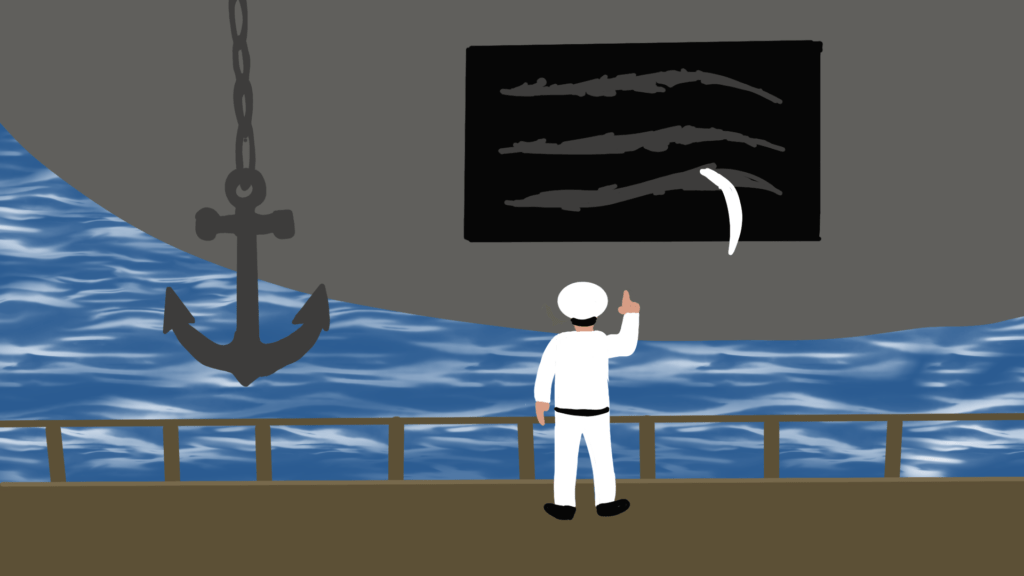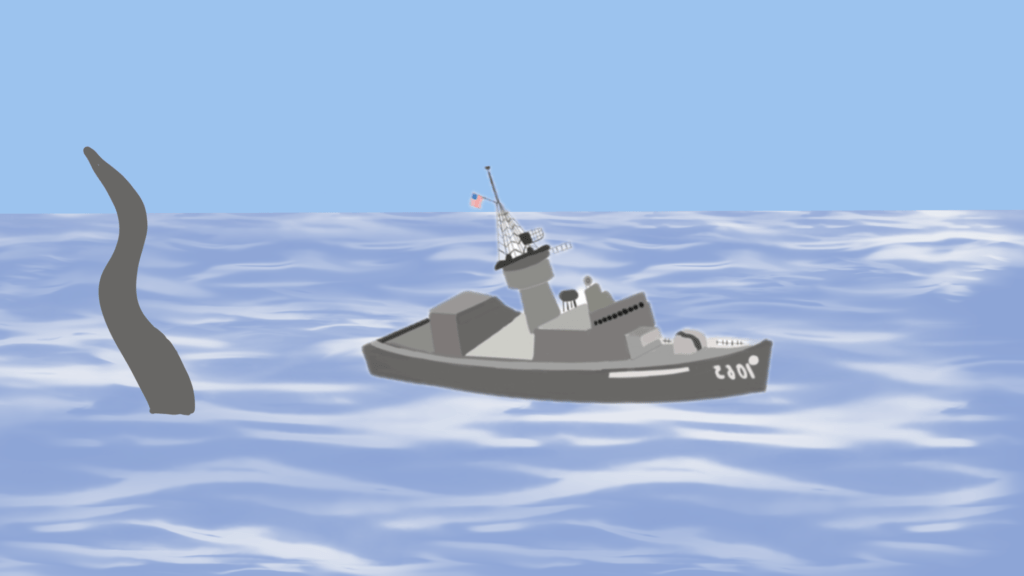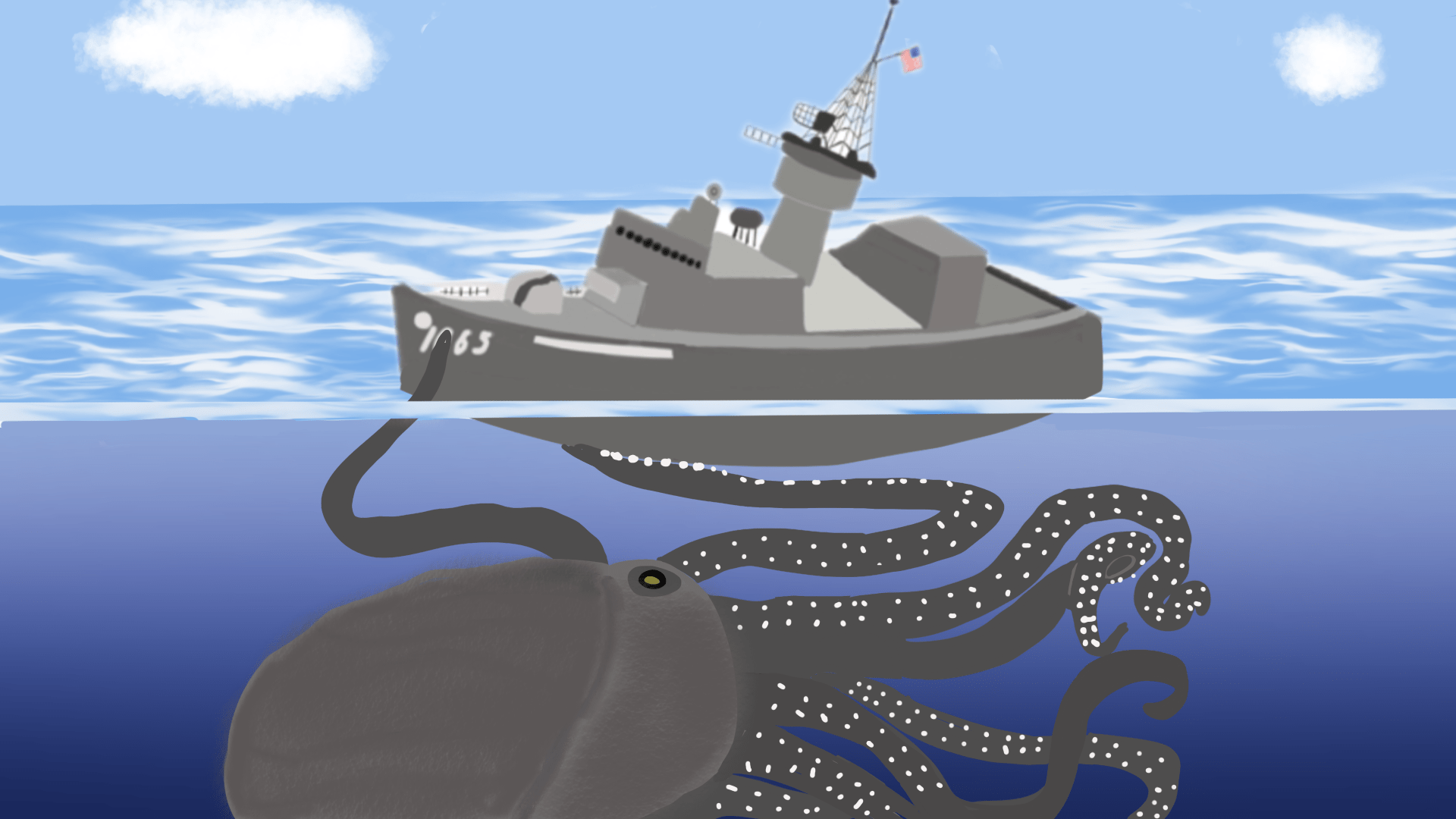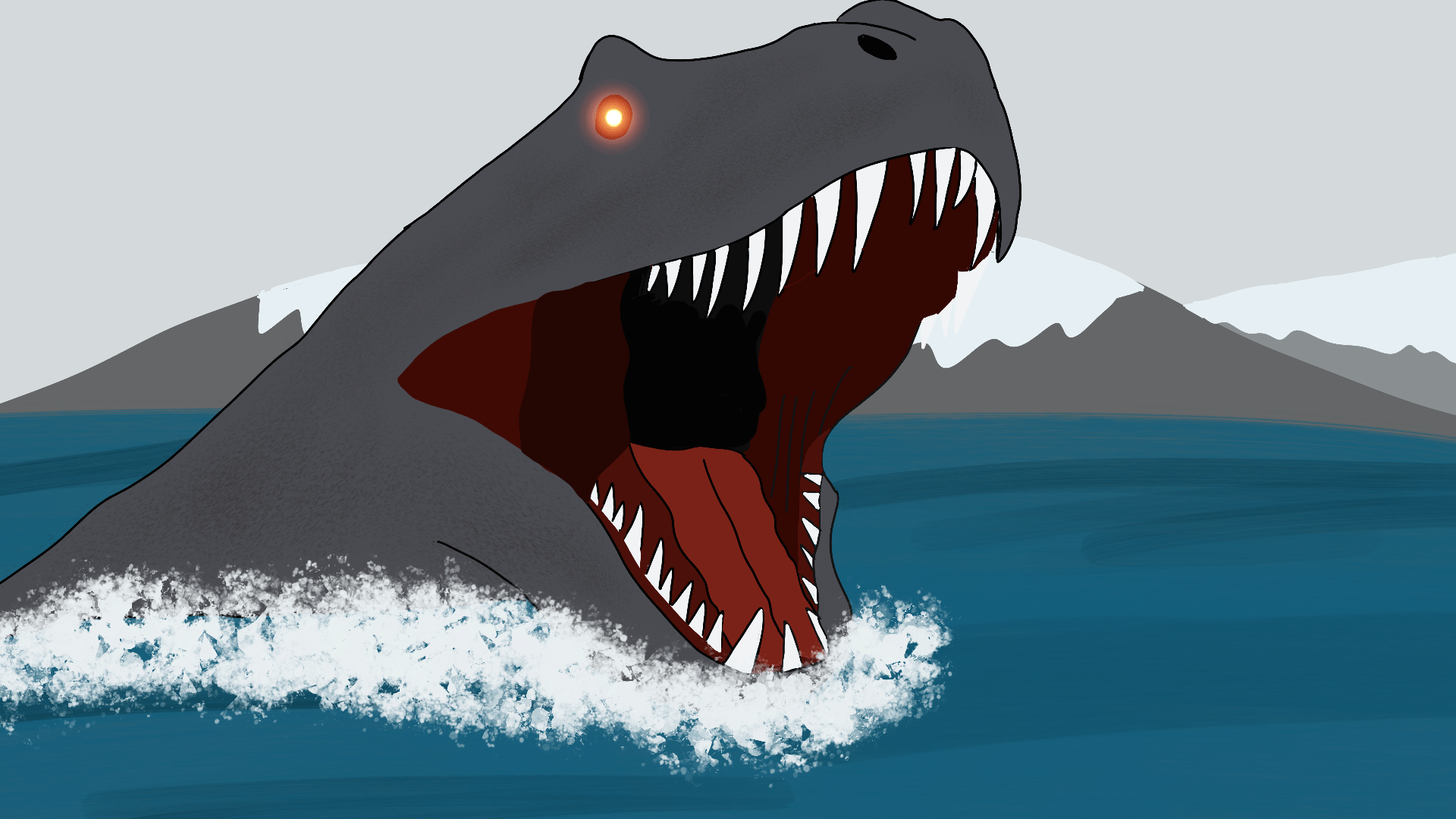In 1978, US Navy Frigate, the USS Stein had an unexpected emergency out in the ocean and was forced to return home. The sub’s anti-submarine gear suddenly went haywire. As the shipped dry-docked and the sailors reunited with loved ones, the question still remained, why did the gear break? Petty officer Ira Robinson would initially investigate the gear, and what he saw next would truly shock him. There were massive scratches, some up to 4 feet in length. Something strange had damaged the “NOFOUL” rubber coating of the SONAR system. This rubber protective coating was shredded with massive tears covering around 8%. Gigantic, curved hooks were found at the bottom of most of the tears. This area was damaged by something huge, and powerful. Still, the question remained what was it?
Officer Robinson was able to pull what appeared like a claw from one of the cuts, and he stated it looked like it was attacked by a bunch of alligators. Still, to get a better answer, Navy biologist F.G Wood was called to examine the NOFOUL rubber coating.

Wood would view these massive hooks and recognize these came from the suction cups on giant squids. He would go on and conclude it was a massive squid, the only issue being that these large hooks were 5 times larger than that of the giant squid. The hooks were sent off to be examined in a laboratory setting and to no surprise, the analyst concluded it was some type of giant squid.
Interestingly, based on the hook size the creature that attacked the ship would have had to have been 150 feet long. Wood himself also noted that it could have been an undiscovered species that attacked the ship. The evidence left behind doesn’t prove they exist, but it is a fascinating correlation and one that can’t be quickly dismissed.
One interesting question surrounding the attack on the Stein Navy Ship concerns the nature of the attack. The attack isn’t consistent with the behavior of giant squid. Giant squid are known to be massive, mysterious gentle creatures lurking in the depths, not aggressive and known for attacking ships.

Massive sea monsters are some of the most popular cryptids today and with good reason. To explore this, we must first look at the longest known, the aforementioned giant squid. This massive invertebrate is said to reach up to 60 feet in length. There are undocumented reports of larger specimens washing up on beaches throughout the world over time, but often these sightings are in underdeveloped countries with no means to preserve the corpse or document it. The Colossal squid, which is massive as well, is heavier than the giant squid but shorter around 30-40 feet in length.
While these creatures are both extremely large, the fact remains we know very little about them still. The giant squid lives deep in the ocean while colossal squid are said to reside in the Antarctic seas deep as well around 3000 feet deep. We typically only find bodies when one either washes ashore or a fisherman finds one.
(What is the Walgren Lake Monster?)
Despite this, massive squids have captured the minds for centuries.
On August 6, 1848, Capt. Peter M’Quhae was sailing the H.M.S. Daedalus through the Cape of Good Hope and the island of St. Helena off the African coast when the crew spotted as a massive creature. They described it as a gigantic sea serpent. The creature was unlike anything the sailors had seen before. News of the encounter hit the British newspaper “The Times” just two months later, recalling the ship’s brush with a nearly 100-foot monster.
The scientific community itself did not all officially recognize the giant squid in the 19th century. But as corpses started washing up on beaches and bodies were found in the ocean, the new species was acknowledged.
(Read About Canada’s Ogopogo here)
With us knowing that giant squid don’t attack ships, we can certainly question just what attacked the Stein Navy Ship. There are various other theories out there. Some say maybe it could be a new species of reptile or other species of squid. One larger and more aggressive than the giant or colossal squid.
Most people are aware the Navy has had several encounters with UFOs flying in their airspace. While there is much concern with this, there is much concern too around USOs, or unidentified submersible objects, meaning unknown objects in the water. We know less about our deep oceans than the surface of the moon and perhaps in these deep waters, we will one day learn why so many sailors insisted there were sea monsters.




